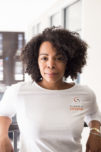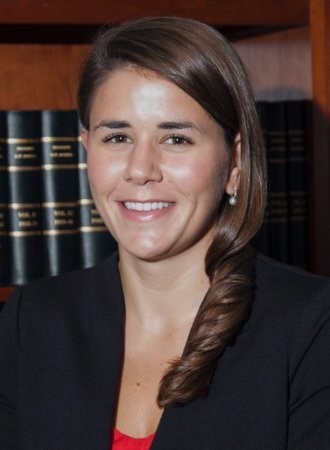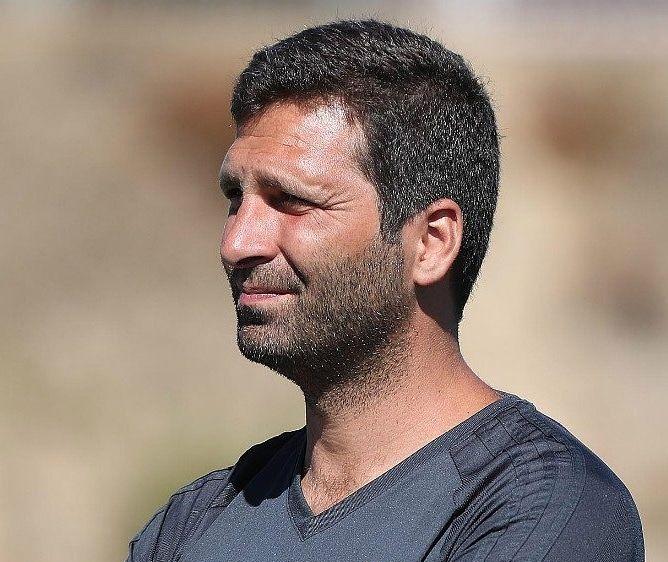Edition 2 – Youth Development and Child Protection
Click here to view the PDF version
Question 1 -
Before COVID-19, what was the biggest issue facing youth sport?

Ju’Riese Colón
(CEO, US Center for SafeSport)
Hands down, it’s a tie between safety and access. Sports teach lifelong skills like leadership, conflict resolution, and teamwork. Unfortunately, many youth don’t have the resources to participate, and those who do have the resources can sometimes deal with issues that impact their emotional and physical safety. Whether it’s bullying by teammates, overly aggressive coaches, or interacting with those who want to hurt them—it can have negative impacts that last a lifetime.

Jasmine Ching
(Safeguarding Specialist, Asian Football Confederation)
The challenge for any organisation – before or after Covid-19 – is to provide organised and easy access to the sport and for it to be conducted in a safe environment. These means ensuring that the necessary safeguards are in place and that the sport takes into consideration the needs of the young person. From the very top to the coaches on the ground, it is important to guarantee that best practice is observed as a way of ensuring that while enjoying the sport young people are not at risk. In Asia there is also a vast difference in the development of facilities and economic power which also provide challenges and sometimes barriers to sport. Before and after Covid, the general lack of systemic awareness and education (at all levels) on child/youth safeguarding, coupled with the lack of urgency, commitment or capability to engage on this constitutes the biggest issue in youth sport in Asia. There is now more emphasis placed by the AFC on addressing this matter.

Katherine Anderson
(Youth Protection Compliance Officer, Major League Baseball)
MLB is committed to providing opportunity for youth to become involved in bat and ball sports. Our youth operations are intended to both create a love of the game from a young age and provide diverse access to our sports. Our organization is invested in ensuring all youth have access to play, all the way from grassroots and recreational to advanced play and skill instruction. As a whole, many of our programs are built to increase baseball and softball participation within underserved communities, all while teaching the values of teamwork and group achievement.

João Tralhão
(Professional Football Coach Former Benefica & AS Monaco)
From my perspective, there are currently some difficulties in the youth development. One of the difficulties we face today is the lack of framework in managing expectations. We live in a society where the speed of change is incredibly fast. This situation creates the feeling that everything must be achieved quickly. This is the absolute opposite of a young athlete entire growth process. All stages of growth must be individualized and respected to be consolidated to ensure more prepared youth people in all dimensions. Another difficulty is also related to today's society. Youths today are less encouraged in a natural context of development, that is, the contexts of playing on the street. This is because they are framed in an environment of high protectionism. Hence the need to recreate this type of stimulus in a club or academy context, defining teaching priorities adjusted to the needs of each age.
Question 2 -
How do you think the global health crisis (COVID-19) is impacting youth sport, both positive and negative? And what solutions have you put in place or are considering?
Ju’Riese Colón
(CEO, US Center for SafeSport)
Ironically, it’s also safety and access. Right now, most youth simply can’t participate in sport for safety reasons. Sports generally require being in close proximity with others and physical contact—something we’re all avoiding right now for the health and well-being of our loved ones and communities. The good news is many of us are successfully navigating these challenges. With more coaching sessions and competitions taking place virtually, there’s an opportunity for us to change the way we interact. However, in doing so, we must make sure the solutions don’t inadvertently harm youth. Putting in place tighter controls around virtual interactions is critical. The Center just released resources to help athletes, parents, and coaches navigate some of these new virtual challenges.
Jasmine Ching
(Safeguarding Specialist, Asian Football Confederation)
With lockdowns in many countries the advice of many Governments has been to stay at home at all times to protect themselves, the community and their country. This means that even if children were allowed out to play sport, coaches and supervising adults would not be. So we have worked on a series of Public Service Announcements which have progressed from the stay at home message to a more stay active message as lockdowns slowing ease. This has been part of the ‘Encourage, Entertain and Energise’ the community – particularly young football fans. We have seen some of our Members and NGOs come up with ingenious ways of reintroducing the game as well – minimising contact but maximising enjoyment.
Katherine Anderson
(Youth Protection Compliance Officer, Major League Baseball)
COVID has stalled the start of baseball and softball play, along with all other youth spring sports. The lack of access to community recreational spaces and an inability to conduct practice and competition between teammates puts an unfortunate burden on our youth and their families. Access to community engagement is something we monitor daily, and communicate with our various stakeholders, for potential ways to ensure youth can safely return to group activity. Additionally, MLB is actively providing ways, through digital means, for children and parents to engage with our sport and learn at home. Through ample online resources provided by MLB and our partner organizations, we are working to ensure that youth continue to maintain healthy, active lifestyles at home while also providing parents and guardians positive ways to participate with their children. We are actively monitoring the current health and safety guidelines in our operational areas, and will work, along with our community partners and sport governing bodies (e.g., USA Baseball & USA Softball), to navigate a future return to play.
João Tralhão
(Professional Football Coach Former Benefica & AS Monaco)
In social life, there is a tendency to control most situations that occur. We are not used to facing uncertainties. On the other hand, this type of scenario is constantly present in the life of sport, which leads me to consider that sport is a privileged way of educating society, especially in the current situation. How are we going to cooperate in a situation of recommended social distance? How can I trust the environment around me to ensure that I am safe? The answer to these questions is, in my opinion, the great challenge that we all face. We can never compromise the education of a young person through the values of sport. As an optimist, I believe that this scenario of global health crisis will challenge us to recreate new practices with the responsibility of ensuring that, even in a scenario of unprecedented uncertainty, we can guarantee that the values of sport rise and seek to overcome this obstacle.
Question 3 -
Overall, how is your organization addressing youth development and child protection in sport — policies, training, education? Please specify.
Ju’Riese Colón
(CEO, US Center for SafeSport)
The Center has always placed a tremendous focus on education and outreach, and COVID-19 hasn’t shifted that. In addition to resources specifically related to navigating a pandemic, the Center continues to share and develop tools to help keep athletes safe. We also spend a considerable amount of time training NGBs, sporting organizations, coaches, and others on how to interact safely with athletes. And with so many of us at home and online, now is the perfect time for everyone to take a course to prepare for the return to sports.
Jasmine Ching
(Safeguarding Specialist, Asian Football Confederation)
The AFC Executive Committee recognised the need for higher levels of safeguarding and with our own Safeguarding specialist we are now working with Member Associations to develop a detailed framework of policies, staff identification and training. The progress of each MA will be recognised with bronze,silver and gold awards. The necessity of safeguarding is also a regular topic for our induction of General Secretaries and also our AFC Social Responsibility Committee.
Katherine Anderson
(Youth Protection Compliance Officer, Major League Baseball)
MLB is committed to furthering the area of youth protection in our MLB and Club-run youth programming. MLB’s Youth Program Protection Policy provides guidelines, requirements, and best practices for our MLB and Club-run youth initiatives. It also provides standards for interactions with our partner organizations. I am pleased to be a part of an organization that is committed to providing such an extensive level of youth programming and I am thankful that we have enveloped our programs in high standards of protections for our participants.
João Tralhão
(Professional Football Coach Former Benefica & AS Monaco)
Sports practice is much more than developing youth athlete's physical-coordinating abilities. Sports practice also promotes the development of cognitive, emotional, psychological-mental, and social dimensions. In this sense, with the indications given by the responsible health entities, all sports should be readapted. Even those considered individual. However, team sports require other adaptations. As an example, I list some adaptations that could have meaning: recreate indoor activities in safe open spaces; recreate rules in each modality to ensure cooperation indicators within the team; greater appreciation of hygiene care; greater involvement of parents/family in the teaching-learning process so that the responsibility for educating is even more shared; The environment around the team should be based on a communication from the coaches that encourages responsibility but above all confidence and positivity.
Question 4 -
As SIGA completes its Universal Standards on Youth Development and Child Protection in Sport, how will these best serve the sport community?
Ju’Riese Colón
(CEO, US Center for SafeSport)
Consistency is key to culture change. Having consistent standards and practices across sport will go a long way when it comes to protecting our youth. I’m looking forward to providing input and identifying practical ways for them to be implemented.
Jasmine Ching
(Safeguarding Specialist, Asian Football Confederation)
Any improved standards are welcomed as they will allow Members and individuals to measure their progress, benchmark themselves against international standards and most importantly of all to ensure they are equipped with the latest knowledge and best practice in safeguarding the present and future young players in our sport.
Katherine Anderson
(Youth Protection Compliance Officer, Major League Baseball)
I am excited about the future completion of the SIGA Universal Standards. Our work on these standards is helping to create a wide breadth of best practices that can be easily applied to a variety of levels of youth and amateur sports, from recreational to international competition. I believe these standards will help all youth groups evaluate their own current policies, or create new guidelines and standards, that are greatly needed in today’s youth sports culture. Our current committee, comprised by great minds across the youth sports landscape, is invested in applying our wide-range of knowledge to this document. I believe that we will be able to create a wider conversation regarding organizational youth protection.
João Tralhão
(Professional Football Coach Former Benefica & AS Monaco)
Currently, the information available and accessible to all about all sports is huge. Much of the information that comes to every youth athlete through the most varied agents involved in their education, is not always the most priority for a type of healthy and complete development. It will be crucial that all entities involved in Youth development have the mission of ensuring that the conditions are created to educate young people with the most important values that sport has. Raising awareness and helping to promote environments in which young people can learn, grow, and develop all kinds of talents based on core values of sport, will always be one of the pillars of all those responsible. This is an example of one of the main pillars that the SIGA organization has promoted.
Back
